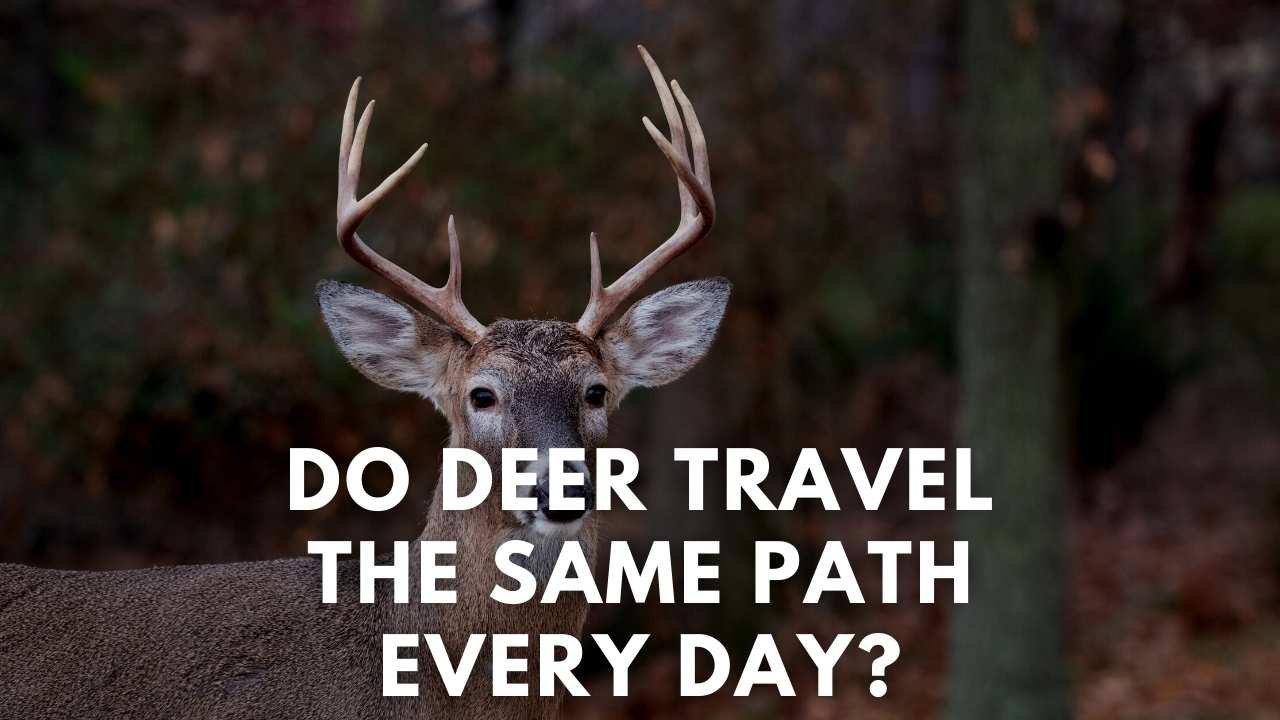Every devoted hunter is aware of the significance of where and when to hunt, particularly when hunting deer. The swiftness of this species complements its long longevity, making it one of the most vigilant families in the wild. Due of this, even during the hunting season, the majority of shooters are unable to engage worthwhile targets.
A lot of hunters wonder do deer travel the same path every day. Deer move from one location to another along predetermined pathways and adhere to a rigid schedule during the day. They appear to be driven to travel most frequently in pursuit of food and water, and sporadically to flee from danger.
Keep reading this article to learn which path deer like to follow and which path they like to avoid.
Do deer travel the same path every day?
Deer, fortunately for hunters, are creatures of habit and travel the same route every day, year after year. Despite their remarkable level of adaptability, deer nevertheless prefer to go to their usual haunts because the forest is full of predators.
The herd will stay on a route for a very long time if it is regarded as safe. In fact, there are several areas of woodlands that deer have frequented for many generations. It would be simple to track a deer herd even if one of these paths were to experience an accident or catastrophe because it wouldn’t be instantly abandoned.
Deer herds are known to travel the same paths for a considerable amount of time, sometimes even years, led typically by the oldest males.
Deer are creatures of habit, according to the findings of many hunters and animal profilers in the past.
They are said to observe and first select their pathways carefully. Deer may stay on a trusted trail for years before abandoning it. Deer won’t quit a particular track once they form the habit of using it, even if it occasionally proves to be a little perilous.
Deer have been known to frequent the same gardens or orchards for many generations because the herd has determined that these areas are secure.
Deer have evolved to live and move around in the wild. They have learned to avoid hunters and possible hunting grounds.
Bucks use strategies like walking toward the wind, which are uncommon among other animal species and are only used by them. They have repeatedly been attacked from behind, so they have gradually taught themselves how to do it.
How often do deer follow the same path?
The 7-Day Rule functions as follows, in principle. You either observe a good buck walking along a certain track and stopping at a scrape, or you capture him on trail cameras. He should be going to the same scrape and taking the same track a year from that day.
Do deer frequent the same areas?
Some deer do stay a short distance from their birthplace, while others travel farther. A deer’s ability to disperse from its original habitat depends on a number of variables. Typically, male fawns are made to leave their mother’s home range.
Do deer travel the same time every day?
Deer tend to search for food in more exposed areas during the daytime when they feel unsafe. They consequently start to move more at night. According to studies, deer activity in the fall peaks between 4:00 and 10:00 PM and again between 4:00 and 8:00 AM, with minor activity between 8:00 and 10:00 AM.
Do Bucks travel the same route?
Although no two mature bucks are alike, it’s a great thing that most of them do follow the same travel routes.
Do deer change their patterns?
Deer usually only alter their behavior when a food source has moved or when they are afraid of predators. If the preferred food sources on your land and those of your neighbors haven’t moved, then the deer’s altered travel behavior is probably brought on by fear of predation.
Do deer follow patterns?
The path taken by deer between their daytime bedding area and their nighttime food supply is the most consistent and immediately observable activity in the deer woods.
Do deer travel the same path daily?
Yes, deer like to travel the same path daily. After the first two seasons, you ought to be familiar with the many deer tracks and beds in your area. Such information will make your approach easier and ensure that you win every hunt.
Do deer bed down in the same place every night?
“Anywhere they want,” is the short response. Deer can snooze alone or in groups, and they can do so anyplace they like. Deer prefer to sleep amid dense cover during the daytime because it makes them feel safe.
Do bucks use the same trails as does?
Bucks clearly use parallel pathways that go around the boundaries of fields and open spaces as they scent-check for does. Bucks typically wander along trails that connect bedding regions to bedding areas in pursuit of estrous does.
- Related: How to find a deer with no blood trail?
Conclusion
Deer frequently follow the same route, which makes tracking them very simple, even for novice hunters. Before you lay your trap, make sure you don’t scare them away from their favored locations.
The majority of deer herds are expected to follow the same route they did the day before. Deer avoid changing their paths very rapidly since it takes them several years to create their regular pathway.
Deer rely on regular paths and routes as a safety net; they will only abandon a familiar route in extreme cases.
Typically, deer can be found in their secure areas, searching for food or bedding. They adhere to a schedule set by their requirements for food and shelter. As a result, many herds travel the same routes for years on end.

